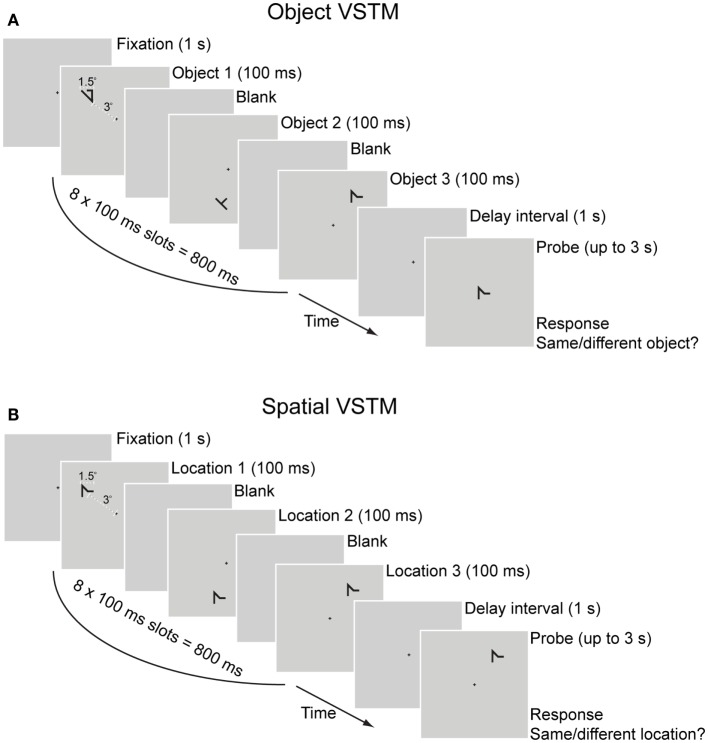Figure 2.
Visual short-term memory task. Each trial had a duration of up to 5.8 s. Trials started with fixation cross for 1 s, followed by eight sample displays with a duration of 100 ms each (total sample displays duration was 800 ms), a blank delay interval (1 s), and a test display/response period (up to 3 s). An auditory tone (“beep”) was used as feedback for incorrect responses. Each item in the memory-set appeared in one of the eight sample displays in random order (e.g., in a trial with a set size of three items shown here, each of the three items was randomly assigned to one of the eight sample displays). Participants were instructed to maintain the memory-set items in VSTM throughout the retention interval by visually projecting them on the screen while avoid verbalizing them. During the response period, participants pressed a button to respond whether the memory probe item was of the same identity as any of the memory-set items (A) or it appeared at the same location as any of the memory-set items (B). In order to minimize load on object VSTM, all items in the spatial memory-set task were of the same identity. Responses were made on a standard QWERTY keyboard with the right index and middle fingers pressing the numeric keypad buttons 1 for “same” and 2 for “different”, respectively. The memory probe was a match on half of the trials, and appeared at a different location (for the spatial VSTM task) or was of a different shape (for the object VSTM task) on the other half.

